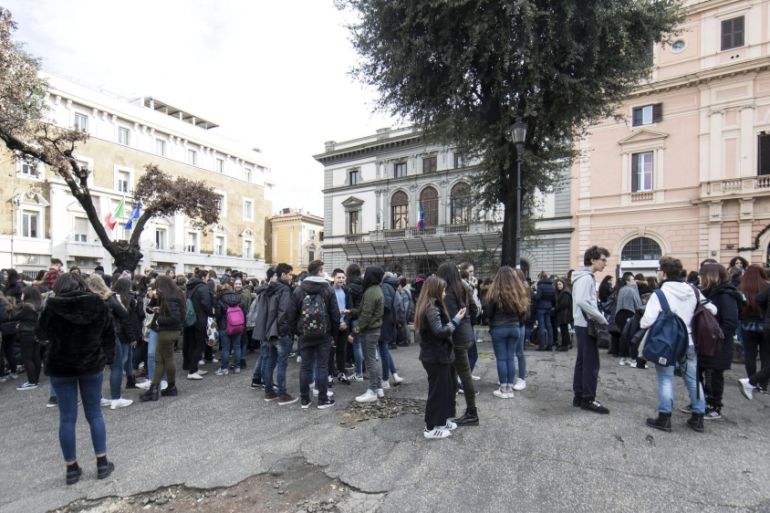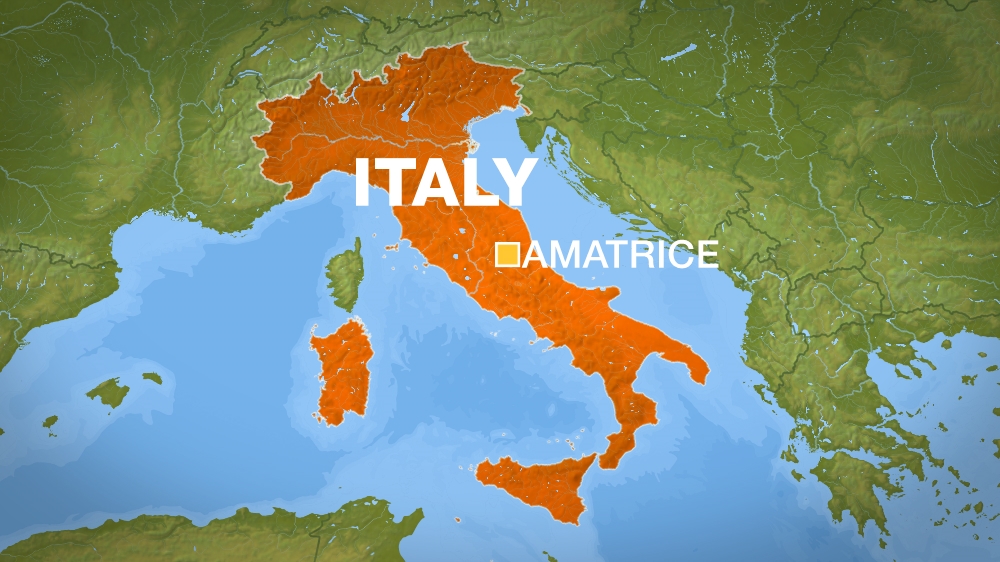Rome shaken as earthquakes hit central Italy
No reports of casualties as three tremors strike in quick succession across the regions of Abruzzo, Lazio and Marche.

Three earthquakes have hit central Italy in short succession, with tremors felt in the capital, Rome, forcing an evacuation of the underground train system.
The German Research Centre for Geosciences, which operates a regional quake monitoring system, said a quake with a preliminary magnitude of 5.5 hit the region north of Amatrice at about 09:25 GMT on Wednesday.
Keep reading
list of 4 itemsHow is Afghanistan coping six months after deadly quakes?
‘Violent rumble’: 4.8 magnitude earthquake rattles New York City, northeast
Taiwan searches for 18 still missing after Wednesday’s earthquake
A second quake with the same magnitude hit the same area about 50 minutes later.
A third quake was also reported shortly after, hitting 110km northeast of Rome with a depth of 40km, according to the European-Mediterranean Seismological Centre.
There were no reports of casualties.
![Some schools in quake-hit regions had to be evacuated [Massimo Percossi/EPA]](/wp-content/uploads/2017/01/9d91c766d3324a4ca4b46d0f49cb8180_18.jpeg)
The Italian Red Cross said dozens of people were trapped by the snow in their homes and that it had received reports of building collapses in hamlets near Amatrice.
“Happily there have been no victims,” Paolo Gentiloni, Italy’s prime minister, said in Berlin.
He said the army’s presence in the affected area would be stepped up.
The tremors were felt across the Abruzzo, Lazio and Marche regions and powerfully enough in Rome, more than 100km away to send some panicked parents scrambling to schools to collect their children.
Centuries-old papal palaces in Rome – showpieces of the mastery of Renaissance architects – swayed during the tremors.
Train services suspended
Train services on some mainlines and the Rome underground were briefly suspended but resumed after safety checks.
Some schools in Rome and all those open in the quake zones were evacuated.
Residents of the city of Aquila, where over 300 people died in a 2009 earthquake, rushed into the snow-covered streets in scenes of panic but the mayor said there had been no building collapses there.

In Amatrice, the belltower of the 15th Century Church of Sant’Agostino crumbled.
It had been badly damaged by the first of the earthquakes which struck the mountainous centre of the country between August and October last year.
Much of Italy’s land mass and some of its surrounding waters are prone to seismic activity, with the highest risk concentrated along its mountainous central spine.
Italy straddles the Eurasian and African tectonic plates, making it vulnerable when they move.
The worst disaster of the 20th century was in 1908 when an estimated 95,000 died in tidal waves following a quake in the sea between mainland Italy and Sicily.